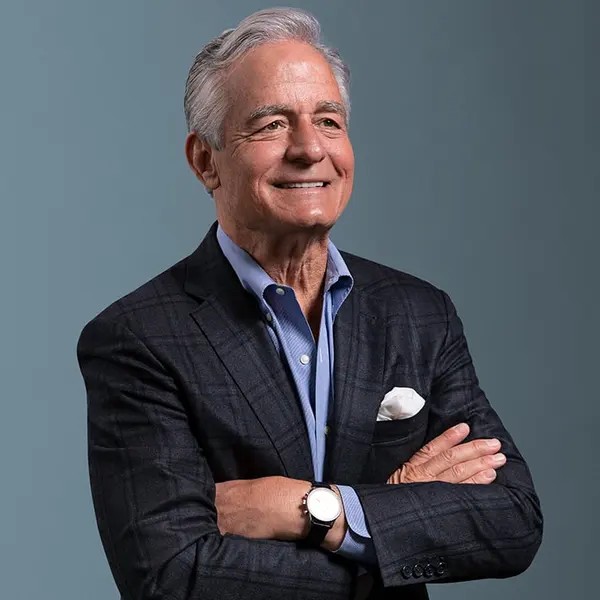











Together with Vista Del Mar, Family Service of Santa Monica is marking 96 years of continuous service to the greater Los Angeles community. LACRA invites the public to join in this legacy of giving by sponsoring the event, forming a team, or making a donation to ensure families in crisis receive the care they need.


Presented by
VISTA DEL MAR’S BOARD OF DIRECTORS + LEADERSHIP ADVISORY BOARD
Sponsored by Eden Alpert on behalf of the Alesia Alpert Family Foundation and Michele & Bob Poletti


We cordially invite you to be a part of the 3rd Annual Golf Classic at the prestigious Sherwood Country Club. This event promises a day of camaraderie, competition, and community, all in support of a cause that transforms lives.



The Los Angeles Commercial Realty Association (LACRA) proudly announces the return of its signature philanthropic event, the 38th Annual Broker Challenge, benefiting Family Service of Santa Monica (FSSM), a division of Vista Del Mar Child and Family Services. This year’s event carries added significance as it mobilizes the commercial real estate community to support families deeply affected by the recent Palisades and Altadena Fires.
Set at a private beach club in Santa Monica, the Broker Challenge brings together hundreds of commercial real estate professionals for a full day of spirited team sports, culminating in the beloved “Sunset Beach Bash”. More than a day of fun, the event raises critical funds for FSSM’s mental health programs serving children, adults, and families facing emotional, social, and economic hardship.
In recent months, that need has grown exponentially. The Palisades and Altadena Fires displaced families overnight—many from within the commercial real estate community itself. In response, Family Service clinicians deployed immediately to recovery hubs like the Malibu Boys & Girls Club at Thirdspace, offering trauma-informed care, crisis counseling, and support for children re-enrolling in schools through collaboration with the Santa Monica-Malibu Unified School District. These rapid interventions are only possible thanks to community-backed events like the Broker Challenge.
Together with Vista Del Mar, Family Service of Santa Monica is marking 96 years of continuous service to the greater Los Angeles community. LACRA invites the public to join in this legacy of giving by sponsoring the event, forming a team, or making a donation to ensure families in crisis receive the care they need.


This year, LACRA will also honor Lewis C. Horne with the 2025 Luminary Leader Award in recognition of his visionary leadership and unwavering commitment to both business excellence and social responsibility.
Lewis C. Horne serves as President for Advisory Services at CBRE for the Greater Los Angeles, Orange County, and Inland Empire regions. He oversees a broad range of business lines including Advisory & Transaction Services, Capital Markets, Asset Services, Project Management, and Valuation. Known for championing integrated workplace solutions and transformation strategies, Mr. Horne has long promoted collaboration across disciplines to address complex client needs. Beyond his corporate leadership, he is a respected civic figure, dedicating his time and expertise to causes including homelessness and workforce development. Having started at CBRE in 1984, Mr. Horne has built a distinguished 40-year career shaped by innovation and service.ish to make a donation in Honor of Lewis Horne.
If you wish to make a donation in honor of Lewis Horne, please click the Donate button below, and, on the Donation page, in the Please indicate what this donation is for: field, please enter In honor of Lewis Horne.



If you cannot attend please consider contributing.
Donor Advised Funds welcomed.
To contribute, please click the Donate button below, and, on the Donation page, in the Please indicate what this donation is for: field, please enter Vista Rocks IX.



We cordially invite you to be a part of the 3rd Annual Golf Classic at the prestigious Sherwood Country Club. This event promises a day of camaraderie, competition, and community, all in support of a cause that transforms lives.
Vista Del Mar has been a beacon of hope for children and families in need for over a century, providing essential mental health services, education, and support for those facing immense hardship. This year's golf event takes on even greater significance as we rally behind families affected by the devastating Palisades and Eaton Fires. Many of these families have lost their homes, livelihoods, and stability, and they rely on Vista Del Mar's programs to rebuild their lives. Through therapy, counseling, educational support, and basic resources, Vista helps these families regain their footing and find hope for the future.
Now, we ask you to stand with us by joining us for this special event - or making a generous contribution - and be a champion for those who need us most.
We look forward to seeing you on the greens for a day of purpose and play!
With deepest gratitude,
Event Co Chairs: Scott Boxenbaum, Arthur Jacobson, Taylor Megdal, Dan Palmer, James Perry, Phil Stein
If you cannot attend please consider contributing.
Donor Advised Funds welcomed.
To contribute, please click the Donate button below, and, on the Donation page, in the Please indicate what this donation is for: field, please enter Golf Classic 2025.


Opening Perspective: A New Reality for Families
Imagine a young student arriving for his counseling session with an empty lunch bag, shoulders tense as he describes another afternoon spent wandering the streets because there’s nowhere safe to play...


January 25th, 11am to 3pm, 3200 Motor Avenue, Los Angeles, CA
If your family has been affected by the devastating fires and are in need of some supplies or if you would like to support our efforts to help families through this crisis, click here.


GivingTuesday is on December 3rd!
This Giving Tuesday, you can help equip some families with a gift that grows alongside their little ones.
Your donation will help provide 25 Radio Flyer 4-in-1 Stroll ‘N Trikes to families in our community. These aren’t just toys – they’re tools for independence that…



The Los Angeles Commercial Realty Association (LACRA) proudly announces the return of its signature philanthropic event, the 38th Annual Broker Challenge, benefiting Family Service of Santa Monica (FSSM), a division of Vista Del Mar Child and Family Services. This year’s event carries added significance as it mobilizes the commercial real estate community to support families deeply affected by the recent Palisades and Altadena Fires.
Set at a private beach club in Santa Monica, the Broker Challenge brings together hundreds of commercial real estate professionals for a full day of spirited team sports, culminating in the beloved “Sunset Beach Bash”. More than a day of fun, the event raises critical funds for FSSM’s mental health programs serving children, adults, and families facing emotional, social, and economic hardship.
In recent months, that need has grown exponentially. The Palisades and Altadena Fires displaced families overnight—many from within the commercial real estate community itself. In response, Family Service clinicians deployed immediately to recovery hubs like the Malibu Boys & Girls Club at Thirdspace, offering trauma-informed care, crisis counseling, and support for children re-enrolling in schools through collaboration with the Santa Monica-Malibu Unified School District. These rapid interventions are only possible thanks to community-backed events like the Broker Challenge.
Together with Vista Del Mar, Family Service of Santa Monica is marking 96 years of continuous service to the greater Los Angeles community. LACRA invites the public to join in this legacy of giving by sponsoring the event, forming a team, or making a donation to ensure families in crisis receive the care they need.


This year, LACRA will also honor Lewis C. Horne with the 2025 Luminary Leader Award in recognition of his visionary leadership and unwavering commitment to both business excellence and social responsibility.
Lewis C. Horne serves as President for Advisory Services at CBRE for the Greater Los Angeles, Orange County, and Inland Empire regions. He oversees a broad range of business lines including Advisory & Transaction Services, Capital Markets, Asset Services, Project Management, and Valuation. Known for championing integrated workplace solutions and transformation strategies, Mr. Horne has long promoted collaboration across disciplines to address complex client needs. Beyond his corporate leadership, he is a respected civic figure, dedicating his time and expertise to causes including homelessness and workforce development. Having started at CBRE in 1984, Mr. Horne has built a distinguished 40-year career shaped by innovation and service.ish to make a donation in Honor of Lewis Horne.
If you wish to make a donation in honor of Lewis Horne, please click the Donate button below, and, on the Donation page, in the Please indicate what this donation is for: field, please enter In honor of Lewis Horne.



If you cannot attend please consider contributing.
Donor Advised Funds welcomed.
To contribute, please click the Donate button below, and, on the Donation page, in the Please indicate what this donation is for: field, please enter Vista Rocks IX.



We cordially invite you to be a part of the 3rd Annual Golf Classic at the prestigious Sherwood Country Club. This event promises a day of camaraderie, competition, and community, all in support of a cause that transforms lives.
Vista Del Mar has been a beacon of hope for children and families in need for over a century, providing essential mental health services, education, and support for those facing immense hardship. This year's golf event takes on even greater significance as we rally behind families affected by the devastating Palisades and Eaton Fires. Many of these families have lost their homes, livelihoods, and stability, and they rely on Vista Del Mar's programs to rebuild their lives. Through therapy, counseling, educational support, and basic resources, Vista helps these families regain their footing and find hope for the future.
Now, we ask you to stand with us by joining us for this special event - or making a generous contribution - and be a champion for those who need us most.
We look forward to seeing you on the greens for a day of purpose and play!
With deepest gratitude,
Event Co Chairs: Scott Boxenbaum, Arthur Jacobson, Taylor Megdal, Dan Palmer, James Perry, Phil Stein
If you cannot attend please consider contributing.
Donor Advised Funds welcomed.
To contribute, please click the Donate button below, and, on the Donation page, in the Please indicate what this donation is for: field, please enter Golf Classic 2025.









